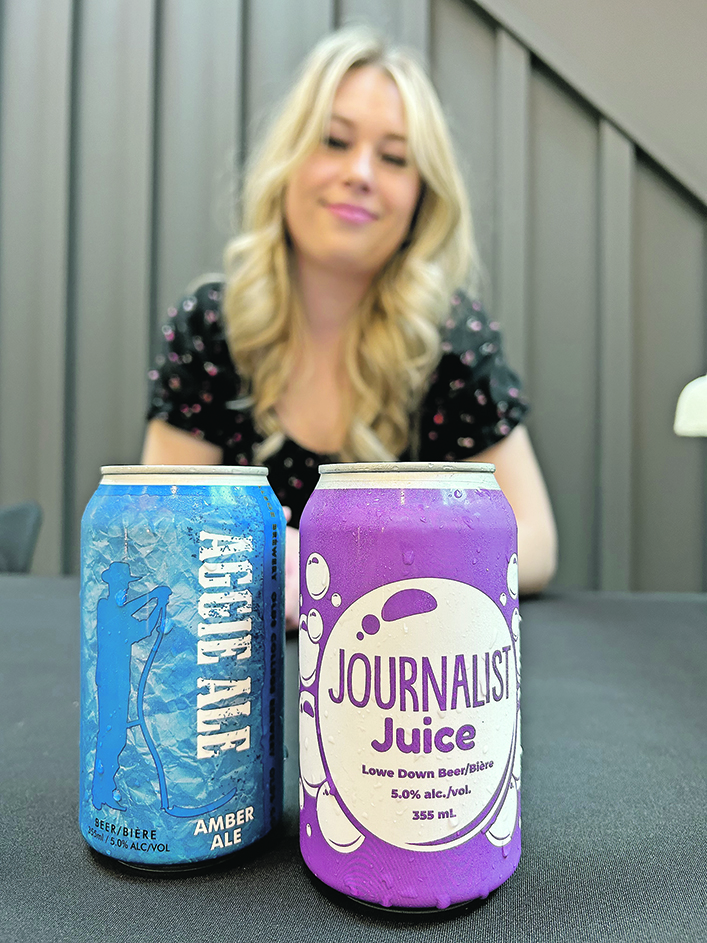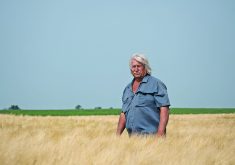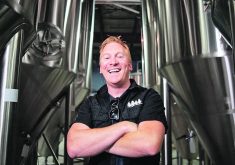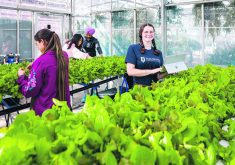Program offers training in basic brewing technology and processes, taste-development and marketing and development
OLDS, Alta. — There are few things more closely married than post-secondary students and beer.
In perhaps the highest expression of this sacred relationship, the beer at Olds College isn’t just sipped by agriculture and other students, but also brewed, analyzed, labelled and marketed by an elite class of trainee brewmasters, the products of a program in operation since 2013.
“They end up all over the world,” said brewmaster, program director and 2015 graduate Jason Popesku, explaining the program to agricultural journalists from around the world.
“One started his own brewery in South Korea.”
The Olds program was the second established in Canada and timed to ride the tidal wave of interest that has lifted so many hundreds of ships in the microbrewery seas in the past decade.
Trained brewmasters are a rare and much-sought commodity today, with microbreweries requiring expertise to produce beers at much smaller scales than the giant breweries.
Microbreweries often use 100 percent barley malt, so they have fewer options for mitigating supply and quality factors that appear in their feed stocks. The giant brewing companies use many non-barley “adjuncts” to balance — and cheapen — their brewing blends, but microbreweries generally can’t or won’t employ those.
That has created an opportunity for barley to bounce back from years of general malaise in the beer-drinking market, in which millennials and Gen Zers have shown less interest in vigorous beer consumption than Gen Xers or baby boomers.
However, the younger generations have embraced craft beers from microbreweries, which has boosted the demand for high-quality barley malt. The under-40 set might not guzzle beer like their elders, but they have a much deeper commitment to barley.
That commitment is on display at Olds College, which advertises the barley base of its beers. Its flagship brew is Lowe Down, the name a clever play on the Lowe variety of barley developed by the provincial program now operated at the college. The hops are local, from the Didsbury-Carstairs area.
Recently, to recognize the presence of about 200 people attending the International Federation of Agricultural Journalists annual congress, Lowe Down was repackaged as Journalist Juice. Two of its other beers, Aggie Ale and Prairie Gold, also highlight the brewing program’s pride in locally sourced ingredients.
The program puts students through two years of training, from basic brewing technology and processes to taste-development to marketing and development.
Beer making isn’t just an industrial process. Especially for microbreweries, taste and drinking pleasure are central, so brewmasters must become connoisseurs, as well as plant managers.
“They have sensory classes to develop their palates so they can taste off-flavours in beers,” said Popesku.

They are trained in chemistry and microbiology, so they can alter their formulations to remove the bad tastes.
The students also get to embrace their artistic sides in coming up with labels to draw attention and build brand loyalty.
“They get more or less creative licence to do whatever they like, as long as it’s not lewd or crude, because, well, it’s still part of Olds College,” said Popesku.
At the Olds College students’ bar a range of funky labels are evident, allowing the global group of journalists to carry out much research on the products of western Canadian barley.
One, Red Rum, presents a pirate-like character on a beach holding a mug of the red ale. Many other clever plays on words and images fill the beer fridges with student creativity and wit.
When people think about beer, they probably don’t think of it as a serious agricultural, industrial and commercial matter, but for the students in this program, for the thousands of farmers who grow barley, for thousands of restaurant and bar operators, and for the general economy, beer is big business.
Having a brewery attached to a campus might not be typical, but in terms of being on the cutting edge of development, Olds appears to have hit a sweet and frothy spot.
















